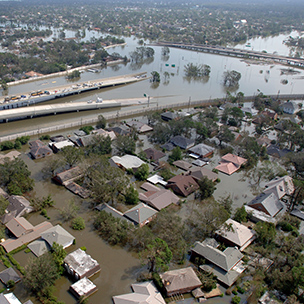August 7, 2015 — In July 2014 we published a photo essay that highlighted the ecological and economic importance of the world’s deltas, pointing out that they are home to nearly half a billion people and provide critical habitat for innumerable plant and animal species. That photo essay also pointed out the danger deltas face: Sea-level rise and human alterations to river systems are threatening to turn the world’s deltas over to the sea.
One threat we didn’t explicitly address, though, was land subsidence. In a new study in the journal Science, researchers explore how sinking land — caused by less sediment reaching deltas along with human activities such as development and resource extraction — combined with sea-level rise will affect coastal delta communities. This combination of sinking land and rising sea, known as relative sea-level rise or RSLR, makes the challenges facing these communities even more daunting because increased RSLR means an increase risk of flooding.
The researchers found that some deltas, such as the Krishna and Brahmani in India and the Ganges-Brahmaputra in Bangladesh, are particularly vulnerable due to a combination of high RSLR, high chance of a hazardous event taking place and low capacity to respond to such an event. But even deltas in places that are less vulnerable, such as the Mississippi in the U.S. and the Rhine in the Netherlands, won’t have an easy path forward. The study points out that strategies to lower risk in these countries often come by way of expensive infrastructure, meaning that the people who call them home will have to make the ongoing decision of whether to spend more money keeping the deltas relatively safe from disaster or freeze spending, making the deltas less secure.
Writing in The Conversation, Zachary Tessler, one of the study’s authors, says that while stemming sea-level rise will require global action to combat climate change, land subsidence can be addressed in part through local and regional efforts. Tessler points to technologies that reduce buildup of sediment at dams, dike breaches, and coastal wetlands restoration as ways to deliver more sediment to deltas and increase retention. The authors also warn in the study, “The current emphasis on short-term solutions for the world’s deltas will greatly constrain options for designing sustainable solutions in the long term.” ![]()
Photo by FEMA/Jocelyn Augustino
Ensia shares solutions-focused stories free of charge through our online magazine and partner media. That means audiences around the world have ready access to stories that can — and do — help them shape a better future. If you value our work, please show your support today.
Yes, I'll support Ensia!

